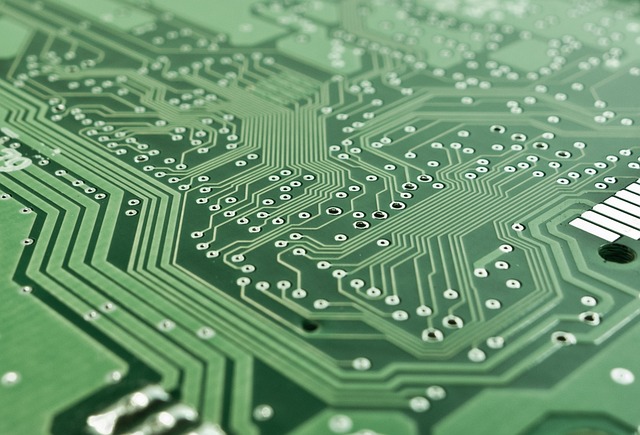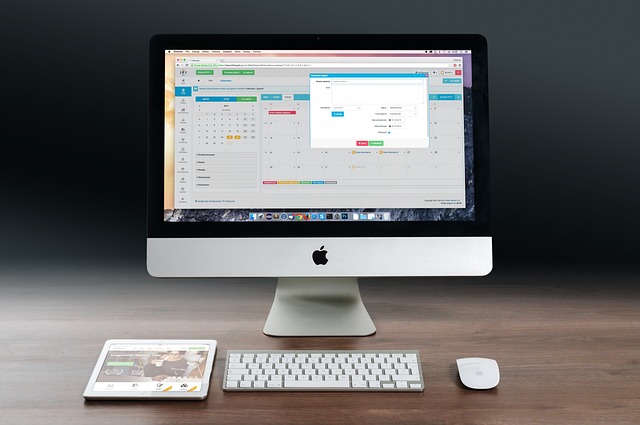When a laptop's battery starts to drain faster or hold less charge than usual, it may be time for a replacement laptop battery. Regular monitoring of your battery's health is crucial for maintaining optimal performance and longevity, as typical batteries can handle around 300 to 500 full charge cycles before their capacity significantly drops. Keep an eye on your battery's charging patterns and power retention times; noticeable declines are signs you might need a new battery. Be alert for other indicators of battery failure, like difficulty holding a charge, overheating, or failing to turn on. Use diagnostic tools to assess your battery status accurately and understand when it might be necessary to replace it.
Safety is paramount when replacing a laptop battery. Ensure you have the correct tools, the right replacement battery, and disconnect all power sources before starting. Discharge the old battery fully by running the laptop at low settings until it shuts off. Perform the replacement in a well-ventilated area due to the hazardous nature of lithium-ion batteries. Adhere strictly to the manufacturer's instructions for safe removal, and consider using protective gear like gloves and eyewear.
After installing the new battery, check its functionality by powering on the laptop and connecting it to power. Proper disposal of the old battery in line with local recycling regulations is also essential for environmental safety. When purchasing a replacement battery, prioritize brands with good track records and warranties. Match the voltage, ampere-hour (Ah) rating, and dimensions of the new battery with the original to ensure compatibility and performance.
Post-replacement, it's important to back up your data, calibrate the new battery by letting it charge for at least 30 minutes, and then conduct a full charge cycle. Verify that the laptop operates normally, with accurate charging indicators and optimal battery health as reflected in system settings or specialized software. Regularly calibrate your laptop's software to maintain peak performance from the replacement battery. Always follow the manufacturer's guidelines for optimal battery care to ensure its longevity and effectiveness.
When the power flickers on your laptop’s display, indicating a battery in decline, it’s time to consider a replacement. This article provides a comprehensive guide on the precautions and steps to take for a safe and effective laptop battery change. From assessing your laptop’s battery health to executing a successful replacement, we’ll cover the essentials to ensure your device operates at its best. Whether you’re a tech enthusiast or a casual user, understanding the process behind a replacement laptop battery is crucial for maintaining optimal performance and longevity of your machine. Follow our detailed instructions for a hassle-free experience, from selecting the appropriate battery model to performing a safe shutdown, disassembly, installation, and post-replacement checkup. With these guidelines, you’ll be equipped to handle your laptop’s power needs with confidence.
- Understanding Your Laptop's Battery Health: Signs Indicating the Need for Replacement
- Preparing for a Laptop Battery Replacement: Safety Measures and Precautions
- Choosing the Right Replacement Battery for Your Laptop Model
- Shutting Down and Powering Up Safely: Procedures Before and After Battery Replacement
- Disassembling Your Laptop: Step-by-Step Guide for Safe Battery Removal
- Installing the New Battery: Best Practices for a Secure Fit
- Post-Replacement Checklist: Ensuring Your Laptop Functions Optimally After Battery Installation
Understanding Your Laptop's Battery Health: Signs Indicating the Need for Replacement

When your laptop’s performance starts to wane, it may be time to consider a replacement laptop battery. Monitoring your device’s battery health is crucial for maintaining optimal performance and longevity. A healthy battery typically lasts between 300 to 500 full charge cycles before its capacity begins to diminish; thus, regular observation of power consumption patterns is essential. Pay close attention to the battery’s charge duration and how long it retains power. A significant drop in these metrics can signal that a replacement is imminent. Additionally, keep an eye out for any error messages or alerts related to battery function, as these are clear indicators from your laptop that the battery may soon need professional attention. If you notice your laptop struggling to hold a charge, overheating, or not powering on when the power button is pressed, these are also telling signs that it’s time for a new battery. Proactive users can utilize built-in diagnostics tools or third-party software to assess battery health, providing a more precise understanding of their laptop’s power needs and the potential necessity for a replacement laptop battery. Regular maintenance and monitoring can extend your laptop’s battery life and prevent unexpected shutdowns or power issues, ensuring that you have a reliable device when you need it most.
Preparing for a Laptop Battery Replacement: Safety Measures and Precautions

When planning a replacement for your laptop battery, safety should be your top priority. Prior to handling the battery, ensure that you have the correct tools and replacement part on hand to avoid any damage or injury. The laptop should be powered off and disconnected from any power sources to prevent electric shocks. It’s imperative to discharge the battery fully before attempting the replacement process, as this minimizes the risk of electrical accidents. To safely discharge the battery, run your laptop on its lowest brightness setting with minimal software running until it powers down. This step is crucial to ensure the battery is at a safe voltage level before you proceed.
Proper ventilation is essential when working with lithium-ion batteries due to their potential to emit hazardous gases if damaged or improperly handled. Always follow the manufacturer’s guidelines for battery replacement, which typically involve removing any adhesive or screws securing the battery and carefully handling it to avoid punctures or bending. Wear protective gloves and eyewear as an extra precaution against chemical exposure or eye injury. Once the old battery is removed and the new one installed, reassemble your laptop and reconnect it to power to confirm that the replacement battery is functioning correctly. Always recycle the old battery according to local regulations to prevent environmental hazards associated with improper disposal of electronic waste.
Choosing the Right Replacement Battery for Your Laptop Model

When your laptop’s battery begins to hold less charge, it’s time to consider a replacement. The key to extending your laptop’s functional life lies in selecting a compatible and high-quality replacement laptop battery. Firstly, verify your laptop model and the exact battery type it requires by consulting the manufacturer’s specifications or support documentation. This ensures that you obtain a battery with the correct voltage, ampere-hour (Ah) capacity, and form factor for your device.
Secondly, consider the brand and warranty offered with the replacement battery. Opting for a reputable brand known for its durability and performance can mitigate future issues. Additionally, a reliable manufacturer will typically provide a warranty, offering protection against manufacturing defects. This added security is crucial for maintaining your laptop’s optimal functionality without frequent replacements. When purchasing, ensure the seller is legitimate to avoid counterfeit batteries that can compromise your device’s safety and performance. With the right battery in place, you can expect a smoother and more efficient computing experience, ensuring your workflow remains uninterrupted.
Shutting Down and Powering Up Safely: Procedures Before and After Battery Replacement

When replacing a laptop battery, safety and precision are paramount to prevent data loss and potential damage to your device. Prior to the replacement of your laptop battery, it is crucial to prepare your machine properly. Begin by shutting down your laptop completely, ensuring that all processes are terminated and no residual power remains in the current battery. This step is essential as it protects your data from corruption and prevents any risk of electric shock during the battery removal and installation process. Additionally, disconnect any peripheral devices, remove any external storage, and safely store sensitive information to avoid any compromise during the maintenance work.
After the new replacement laptop battery has been installed, the subsequent steps are equally important to ensure that your laptop functions optimally with its new power source. Once the new battery is securely in place, reconnect any peripherals and restore your data from a secure backup location. Power up your laptop, but do not immediately resume work. Allow the device to charge for at least 30 minutes to calibrate the new battery and give it an initial charge cycle. This helps in accurately reading the battery level and extends the lifespan of the new replacement laptop battery. After this initial charge, you can proceed to use your laptop as usual, keeping in mind to follow the manufacturer’s recommendations for battery care, such as not leaving the laptop plugged in when full, and avoiding extreme temperatures that could affect battery performance.
Disassembling Your Laptop: Step-by-Step Guide for Safe Battery Removal

When planning to replace your laptop’s battery, safety and precision are paramount to prevent damage to your device or injury to yourself. Before attempting this process, ensure that you have the correct replacement laptop battery for your specific model. Manufacturers often provide detailed guidelines on how to proceed with a battery swap, which should be followed closely.
To begin, power down your laptop and remove all cables and peripherals connected to it. It’s essential to discharge the battery to a safe level before you start; consult your user manual or the manufacturer’s website for the recommended voltage. Next, carefully open your laptop according to the service manual, which typically involves unscrewing specific screws and gently prying off the bottom panel. Locate the battery, and note any connections or clips holding it in place. With patience and care, disconnect these connections, taking note of their orientation for reassembly. Once the battery is freed from its moorings, remove it safely. Keep in mind that lithium-ion batteries can potentially pose a fire risk if damaged, so handle them with care and avoid short circuiting the terminals.
After setting the old battery aside, prepare the new replacement laptop battery by installing it in the same orientation as the one you removed. Reconnect all cables and ensure that everything is securely fastened as per the original setup. Once the new battery is installed, reassemble your laptop carefully, ensuring that all screws are tightened to the specified torque. Finally, charge the new battery to a full capacity within the laptop and test its functionality before regular use. Remember to always refer to the specific service manual for your laptop model when performing battery replacement to avoid any complications or damage.
Installing the New Battery: Best Practices for a Secure Fit

Post-Replacement Checklist: Ensuring Your Laptop Functions Optimally After Battery Installation

When your laptop’s battery begins to show its age through shorter run times and a diminished capacity to hold a charge, it’s time to consider a replacement laptop battery. Post-installation of this new battery, a meticulous checklist should be followed to ensure your laptop functions at its best. Firstly, verify that the laptop powers on successfully and that the new battery charges without any errors. Ensure that the charging indicator is accurate and reflects the battery’s current state correctly. Next, check the battery health through your laptop’s settings or using specialized software to confirm it’s functioning within expected parameters. Run a full charge cycle by allowing the battery to drain completely, then recharge it until it indicates 100% capacity. Monitor the laptop’s performance throughout this process, looking for any signs of abnormal behavior or unexpected shutdowns, which could indicate residual issues from the old battery or problems with the replacement. After these steps, your laptop should be equipped with a fresh, fully functional battery, ready to provide reliable power for all your computing needs. Always refer to the manufacturer’s guidelines for post-replacement procedures and ensure that any software calibrations are performed as recommended to maintain optimal battery performance.
When addressing a laptop’s battery health, it is imperative to approach the matter with care and precision. This article has provided a comprehensive guide on understanding battery conditions, preparing for a safe replacement, and executing the process with attention to detail. From recognizing the signs of a degraded battery to meticulously installing a new replacement laptop battery, each step has been outlined to ensure your device operates at its best. Adhering to the safety measures and following the post-replacement checklist are crucial for maintaining optimal performance. By taking these precautions, you can extend your laptop’s lifespan and enhance its efficiency. Remember to handle the battery replacement process with caution to avoid any potential risks or damages. With the guidance from this article, you are now well-equipped to manage this task effectively.
